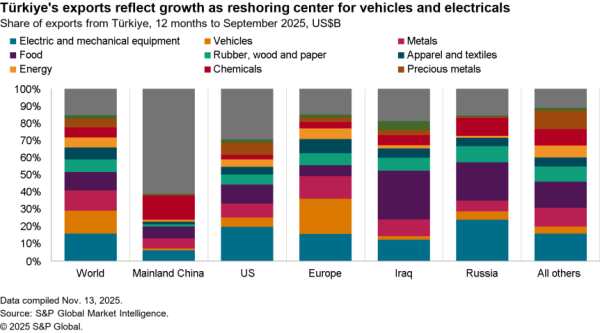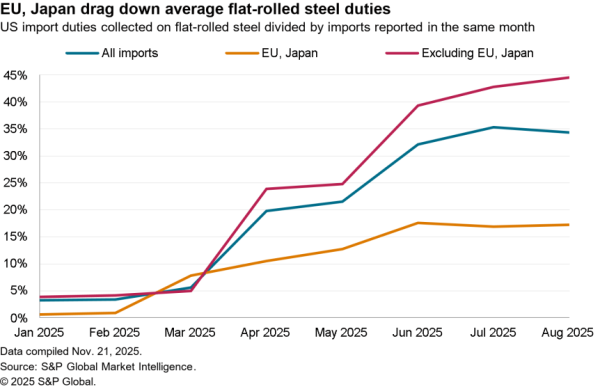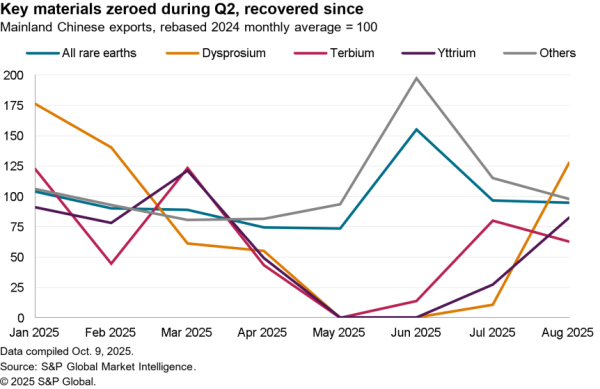Panjiva Research took part in a webinar on July 27 with our colleagues from the S&P Global Market Intelligence Renewable Energy research team. The event covered the prospects and challenges faced by behind-the-meter solar power generation and included a Q&A session. A replay is available while this report addresses the supply-chain related questions submitted by participants as well as the result of a poll held during the call.
Q: Will the result of the forthcoming U.S. elections have a bearing on solar power equipment sourcing? How is the China-US trade situation expected to impact solar prices in the short and long term?
As discussed in Panjiva’s Q3 Outlook it’s likely that both the mainstream candidates for the Presidency will pursue “tough on China” policies. The key difference is that President Trump will likely continue with a bilateral, tariff-led strategy while former Vice President Biden may look to build a multilateral solution. Biden is unlikely to remove tariffs in the short-term though and is in the process of outlining a wider industrial strategy to encourage the reshoring of U.S. manufacturing. Whether the latter extends to solar power equipment remains to be seen.
The degree to which tariffs have an impact on the cost of solar panels in the U.S. market will depend on the willingness of Chinese exporters to commit to burden sharing in the form of price reductions. Looking broadly across the economy there is evidence of such strategies though they are dissipating.
A wider issue is that the rivalry between the U.S. and China is founded in a technological supremacy struggle rather than being about tariffs per se. As a result the access to the development of higher value technology solutions for solar power generation in the U.S. may be limited for Chinese manufacturers.
In a poll held during the event the participants were asked “Which factors do you expect will most impact growth of behind-the-meter solar?” Only 3.6% cited supply chain concerns as the most important factor whereas 23.0% stated technological and cost evolution was more important.

Source: Panjiva
Q: Does USMCA (or “new NAFTA”) make any difference to sourcing?
The biggest changes in the U.S. Mexico Canada Agreement when compared to NAFTA include rules of origin for complex manufactured products such as autos as well as change in dispute settlement procedures. The latter may be leveraged by U.S. firms with an interest in Mexican installations of renewable energy projects following a Mexican government order that may limit solar power installations in order to electrical system reliability.
The complexity of the situation may mean that other sectors, in particular base metals such as aluminum, may go through the dispute settlement process sooner and provide a template for development.
In the meantime there’s already been a slowdown in Mexican imports of renewable energy equipment, Panjiva’s data shows, with imports of solar power equipment having fallen by 33.6% year over year in Q2’20 while shipments of wind turbine equipment fell by 22.1%. Considering the widespread shutdown of non-essential industry in Mexico for much of the quarter that is a remarkable result.

Source: Panjiva
Q: Are there risks for sourcing strategies beyond import duties to consider?
One remarkable element of the industry’s performance has been its resilience during COVID-19 with shipments continuing to surge even during the depths of the pandemic. That’s raised concerns however about the risks of oversupply of panels, as discussed in Panjiva’s research of July 20. That may have led some suppliers to cut back their shipments to the U.S. in Q2.
Panjiva’s data shows that U.S. seaborne imports of solar panels linked to Hanwha Q-Cells and Trina Solar fell by 53.1% and 4.1% respectively in Q2 compared to Q1. By contrast, shipments linked to LONGi and East Group increased by 51.5% and 11.1% respectively while Jinko Solar‘s were broadly unchanged. Shipments by all five are nonetheless well ahead of the same period a year earlier.
Another issue to consider is not just current import duties, but also those that have yet to be applied or where future trade policy pressures may apply. The U.S. elections will be a driver of uncertainty in the long-term, though short-term the risk of an increasingly hawkish stance by the Trump administration with regards to Vietnam or the European Union may be issues to watch.

Source: Panjiva




